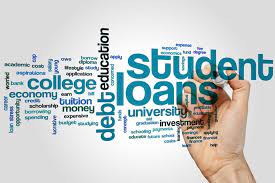As the cost of higher education continues to rise, many students and their families find themselves in need of additional financial assistance beyond federal aid and scholarships. Private loans for students have become a common solution to bridge the gap between the rising costs of tuition, books, and living expenses and what students can afford.
In this blog post, we will explore the world of private student loans, their benefits, considerations, and how to make informed decisions when pursuing this financial option.
What Are Private Student Loans?
Private student loans are financial products offered by private lenders, such as banks, credit unions, or online lenders, to help students pay for their education expenses. Unlike federal student loans, which are provided by the government and come with various borrower protections and fixed interest rates, private loans are offered by private institutions and typically have variable interest rates and fewer built-in protections.
Who Can Borrow Private Student Loans?
Private loans for students are available to undergraduate and graduate students, as well as parents who wish to borrow on behalf of their child’s education. Eligibility for private loans often depends on the borrower’s credit history and income or the creditworthiness of the co-signer, if applicable. Interest rates and loan terms can vary significantly from lender to lender.
Benefits of Private Student Loans
Here are some of the benefits that come with private student loans;
1. Flexibility in Borrowing Limits
Private loans for students often allow borrowers to cover the full cost of attendance, including tuition, room and board, books, and other educational expenses. This flexibility can be beneficial for students attending higher-cost institutions or pursuing advanced degrees.
2. Choice of Interest Rates
While private loans typically have variable interest rates, some lenders offer fixed-rate options. Borrowers with strong credit histories can secure competitive interest rates lower than those offered by federal loans.
3. Fast Application and Approval Process
Private lenders often have quicker application and approval processes compared to federal loans, which can be advantageous for students who need funds promptly to secure their education.
4. No Federal Loan Limit
Private loans do not have the same annual or aggregate borrowing limits imposed by federal loan programs. This can be helpful for students who require additional funding beyond federal loan limits.
Considerations and Potential Drawbacks
Here are some of the considerations and potential drawbacks that you need to aware of;
1. Creditworthiness Matters
Private lenders assess the creditworthiness of borrowers and co-signers, if applicable. Students with limited credit history or poor credit may need a creditworthy co-signer to qualify for favorable loan terms.
2. Variable Interest Rates
Most private loans for students have variable interest rates, which can lead to fluctuations in monthly payments and overall repayment costs over time. Some lenders offer fixed-rate options, but these may come with higher initial rates.
3. Limited Borrower Protections
Private loans typically lack the borrower protections provided by federal loans, such as income-driven repayment plans, loan forgiveness programs, and deferment or forbearance options in case of financial hardship.
4. Potential Higher Costs
Due to their variable interest rates and fewer borrower protections, private loans may end up costing more over the life of the loan compared to federal loans with fixed interest rates and income-driven repayment options.
Making Informed Decisions
Before taking private student loans, you should make these considerations:
1. Exhaust Federal Loan Options First
Before considering private loans, students and their families should explore federal student aid options, including Stafford Loans and PLUS Loans. Federal loans often offer more favorable terms and protections.
2. Compare Lenders
Shop around and compare private lenders to find the best terms and interest rates. Consider factors such as interest rate type (variable or fixed), loan fees, repayment terms, and available borrower benefits.
3. Understand the Repayment Terms
Review the repayment terms and conditions of each private loan carefully. Understand when repayment begins, the grace period, and the available options for deferment or forbearance.
4. Consider Co-Signers
If you have limited credit history or a less-than-stellar credit score, consider applying with a creditworthy co-signer to improve your chances of approval and secure better loan terms.
5. Budget and Plan for Repayment
Create a budget and repayment plan before taking out a private student loan. Understand your monthly payment obligations and how they fit into your overall financial situation.
6. Read the Fine Print
Thoroughly read and understand the terms and conditions of your loan agreement, including any clauses related to interest rate adjustments, late fees, and repayment options.
Finally
Private loans for students can be a valuable tool for financing higher education, but they come with both benefits and potential drawbacks. It’s crucial for students and their families to research their options, compare lenders, and carefully consider their financial circumstances before taking on private student loan debt. By making informed decisions, borrowers can better navigate the complexities of education financing while minimizing the long-term financial impact.

